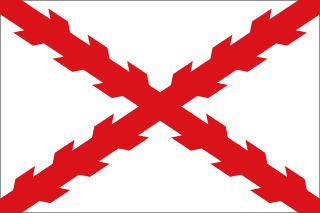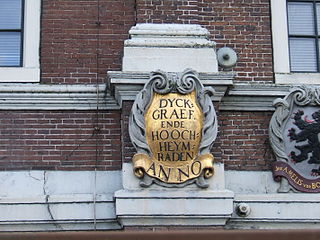This article needs additional citations for verification .(September 2014) |

The regions of the Netherlands provides links to both regions and subregions of the Netherlands.
This article needs additional citations for verification .(September 2014) |

The regions of the Netherlands provides links to both regions and subregions of the Netherlands.
The regions of the Netherlands are divided in the North, South, West and East Netherlands.
Many regions in the Netherlands are officially defined by certain regulations of organizations.
NUTS-1 Regional divisions as used by the European Union: [1]
The subregions (Dutch: streek or landstreek (plural: (land)streken), literally translating to a combination of 'land/country area/region') are non-administrative area in the Netherlands that can be demarcated on grounds of cohesion with regards to culture or landscape. This means that a landstreek is not bound by provincial or municipal boundaries. Below is a list of all Dutch landstreken with the province(s) in which they are located mentioned between brackets.













There are twelve provinces of the Netherlands representing the administrative layer between the national government and the local municipalities, with responsibility for matters of subnational or regional importance.

The Seventeen Provinces were the Imperial states of the Habsburg Netherlands in the 16th century. They roughly covered the Low Countries, i.e., what is now the Netherlands, Belgium, Luxembourg, and most of the French departments of Nord and Pas-de-Calais (Artois). Also within this area were semi-independent fiefdoms, mainly ecclesiastical ones, such as Liège, Cambrai and Stavelot-Malmedy.

The National Reserve Corps is a part of the Royal Netherlands Army. NATRES is a corps in the sense that it has a specialized task. The reservist is, like all Dutch military personnel, a military volunteer.
The Estates, also known as the States, was the assembly of the representatives of the estates of the realm, the divisions of society in feudal times, called together for purposes of deliberation, legislation or taxation. A meeting of the estates that covered an entire kingdom was called an estates general.
The Netherlands has several levels of administrative subdivisions. The first level of subdivision consists of 12 provinces. The second level of subdivision consists of 342 municipalities.
This is an armorial of the Kingdom of the Netherlands.

In the Netherlands, a water board, water council or water authority is a regional governing body solely charged with the management of surface water in the environment. Water boards are independent of administrative governing bodies like provinces and municipalities. In general, they are responsible for managing rivers and canals, issues with the flow of watercourses and drainage issues, water collection, flood and erosion prevention and provision of potable water. They manage polder systems, water levels, water barriers and locks, enforcements, water quality and sewage treatment in their respective regions. The concept of a coordinating "High Water Authority" (Hoogheemraadschap) originated in what now is the province of South Holland in the 12th century.

The provincial council, also known as the States Provincial, is the provincial parliament and legislative assembly in each of the provinces of the Netherlands. It is elected for each province simultaneously once every four years and has the responsibility for matters of sub-national or regional importance. The number of seats in a provincial council is proportional to its population.
Dutch dialects are primarily the dialects that are both cognate with the Dutch language and spoken in the same language area as the Dutch standard language. They are remarkably diverse and are found within Europe mainly in the Netherlands and northern Belgium.
De Hoop is a name used for mills in Belgium and the Netherlands.
The Dutch Amateur Radio Emergency Service (DARES), which was founded on 12 May 2004, is a non-profit organization made out of licensed radio amateurs in the Netherlands. DARES participants are able to set up a national, continental or international radio network in case of an emergency situation, like a power outage on a large scale, a flooding, a cyber attack causing severe damage to communication networks, or other emergency situations, where the safety of a large group of people are in danger.

Provincial elections were held in the Netherlands on 20 March 2019. Eligible voters elected the members of the Provincial States in the twelve provinces of the Netherlands. The elections were held on the same day as the 2019 Dutch water boards elections and, in the Caribbean Netherlands, island council elections.
Miss Grand Netherlands 2018 was the third edition of the Miss Grand Netherlands beauty pageant, held at the Apollo Hotel, Vinkeveen, Netherlands, on June 17, 2018. Ten candidates who qualified through the casting process held earlier in March competed for the title, and a businessperson from North Brabant, Kimberley Xhofleer, was named the winner. Kimberley then represented the country at the Miss Grand International 2018 pageant in Yangon, Myanmar, but was unplaced.

Miss Grand Netherlands 2023 was the fourth edition of the Miss Grand Netherlands beauty pageant, held on June 4, 2023, at the Claus Event Center in the city of Hoofddorp. Eleven candidates, who qualified for the national stage through an audion held in February and then were assigned to represents one of the country's provinces, competed for the title.